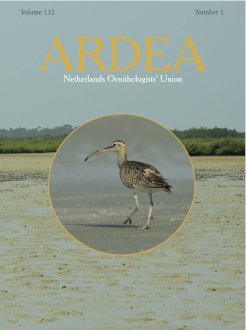The marked variation in egg coloration within many bird species has attracted the interest of evolutionary biologists for decades. Many species, such as the Pied Flycatcher Ficedula hypoleuca, use biliverdin pigment to lay vibrant blue-green eggs that function as a signal of female condition to increase parental care from their partner. Here we report on the first case of complete shell pigment loss in this species. So far, we have monitored thousands of Pied Flycatcher clutches over 33 breeding seasons, and we have never observed such a phenomenon before. We observed and studied a complete clutch of five eggs with shell pigment loss. We evaluated the condition of the female and performed blood smears to discuss the potential causes of this phenomenon. The most plausible hypothesis that explains the finding is a genetic mutation affecting the biliverdin production pathway.
How to translate text using browser tools
28 March 2024
First Documented Report of Complete Shell Pigment Loss in the Blue-Green Eggs of the Pied Flycatcher
Manuel Fuertes-Recuero,
Alejandro Cantarero
ACCESS THE FULL ARTICLE
<
Previous Article
|

Ardea
Vol. 112 • No. 1
March 2024
Vol. 112 • No. 1
March 2024
biliverdin
blue-green eggs
depigmentation
Ficedula hypoleuca
shell gland





